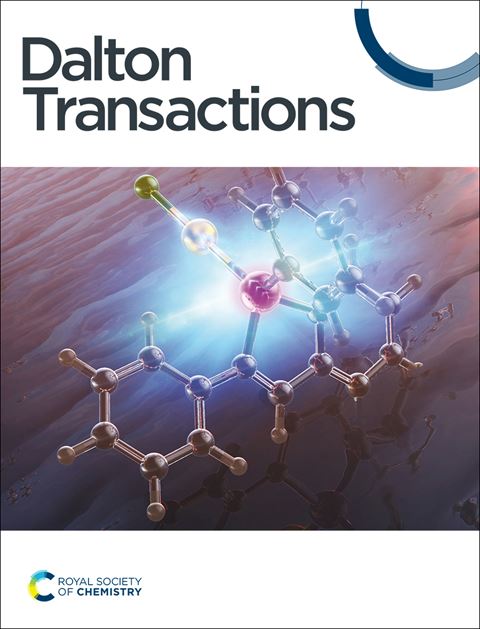The Interactions Between the Well-Isolated Dy3+ Ions Considerably Contribute to the Demagnetization of Mononuclear Acetylacetonate-Pyrazinate Complex
IF 3.5
3区 化学
Q2 CHEMISTRY, INORGANIC & NUCLEAR
引用次数: 0
Abstract
A series of new mononuclear square antiprismatic complexes comprising acetylacetonate (acac-), pyrazine-2-carboxylate (PyrCOO-) and 1,10-phenanthroline (phen) ligands namely [Ln(acac)2(PyrCOO)(phen)] (Ln is Dy-Yb, Y; 1-5, 6) were prepared and studied. These complexes are new examples of extremely scarcely studied eight-coordinated tetra-chelate complexes comprising β-diketonate and carboxylate ligands. Complexes 1, 3 and 5 exhibit pronounced slowdown of the demagnetization with corresponding pathways additionally validated by the ab initio calculations. In particular, complex 1 exhibits zero-field relaxation with Δeff/kB of 149 K, while the application of the optimal DC field (1500 Oe) enhances Δeff/kB value to 265 K. Thus, although the quantum tunneling of magnetization (QTM) contributes to zero-field relaxation of complex 1, it is among the most efficient zero-field Dy-based SMMs formed by β-diketonate and/or carboxylate ligands. Moreover, Δeff/kB value under the optimal field is the highest one among the related complexes. Interestingly, the Dy-Dy magnetic interactions have considerable effect on the SMM performance of 1 even given the spatial (>8 Å) separation of Dy3+ ions isolated by coats of bulky diamagnetic ligands.分离良好的Dy3+离子之间的相互作用在很大程度上促进了单核乙酰丙酮-吡嗪酸配合物的退磁
一系列由乙酰丙酮酸(acac-)、吡嗪-2-羧酸酯(PyrCOO-)和1,10-菲罗啉(phen)配体组成的新型单核方形反柱状配合物,即[Ln(acac)2(PyrCOO)(phen)] (Ln为Dy-Yb, Y;1- 5,6)的制备和研究。这些配合物是极少研究的由β-二酮酸盐和羧酸盐配体组成的八配位四螯合配合物的新例子。配合物1、3和5表现出明显的退磁减缓,并通过从头计算验证了相应的路径。特别是配合物1表现出零场弛豫,Δeff/kB为149 K,而最优直流场(1500 Oe)的应用使Δeff/kB值提高到265 K。因此,虽然量子隧穿磁化(QTM)有助于配合物1的零场弛豫,但它是由β-二酮酸盐和/或羧酸盐配体形成的最有效的零场镝基smm之一。最优场下的Δeff/kB值是相关配合物中最高的。有趣的是,Dy-Dy磁相互作用对1的SMM性能有相当大的影响,即使考虑到空间(>8 Å)分离的Dy3+离子被大块的抗磁性配体涂层隔离。
本文章由计算机程序翻译,如有差异,请以英文原文为准。
求助全文
约1分钟内获得全文
求助全文
来源期刊

Dalton Transactions
化学-无机化学与核化学
CiteScore
6.60
自引率
7.50%
发文量
1832
审稿时长
1.5 months
期刊介绍:
Dalton Transactions is a journal for all areas of inorganic chemistry, which encompasses the organometallic, bioinorganic and materials chemistry of the elements, with applications including synthesis, catalysis, energy conversion/storage, electrical devices and medicine. Dalton Transactions welcomes high-quality, original submissions in all of these areas and more, where the advancement of knowledge in inorganic chemistry is significant.
 求助内容:
求助内容: 应助结果提醒方式:
应助结果提醒方式:


